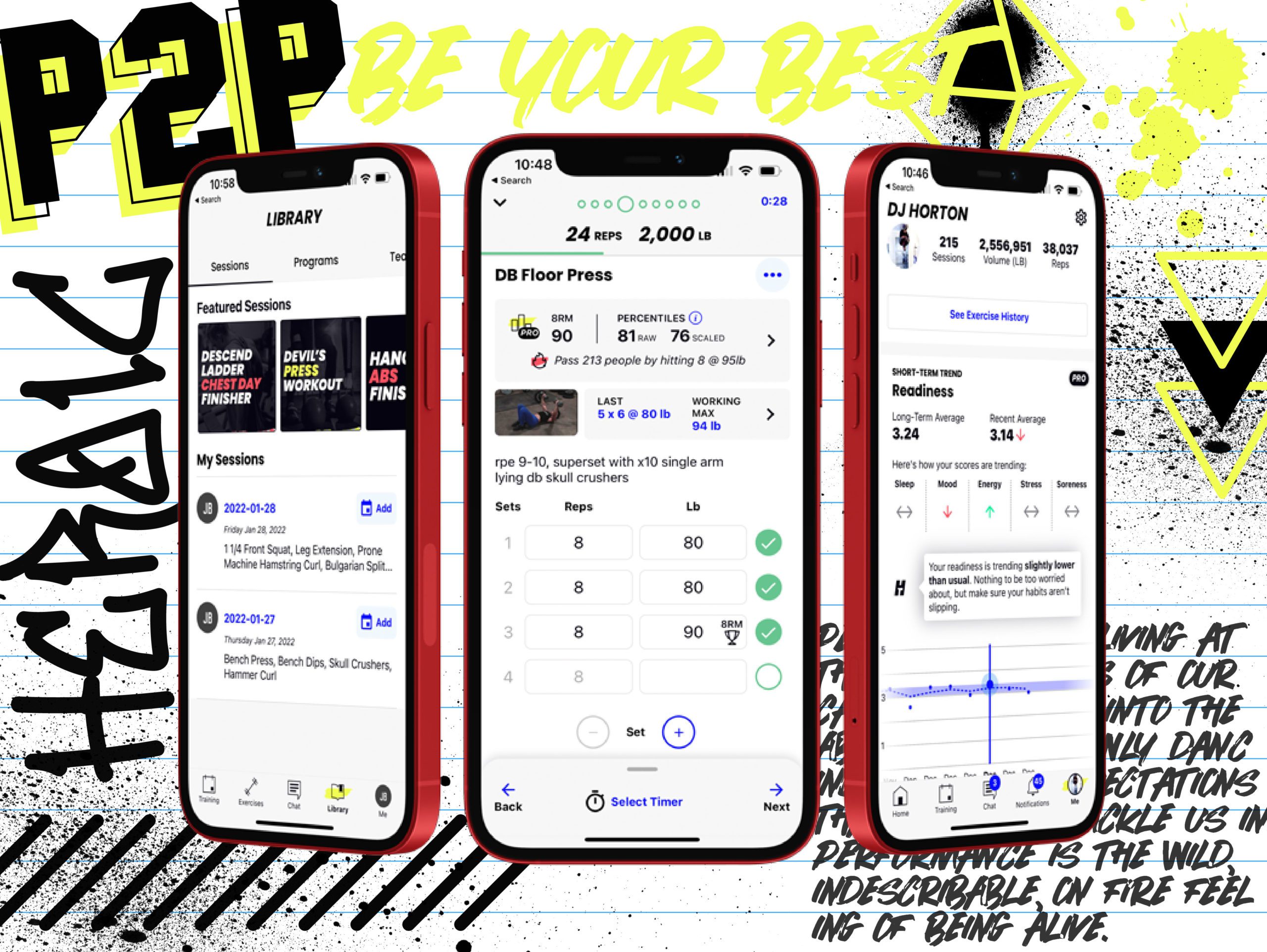Understanding Tempo Training For Maximum Strength Gains

Sari Terranova is a total supermom, CPT, and nutrition coach who introduces women and youth athletes to the power of weightlifting, bodybuilding, powerlifting, and functional strength training. She’s got 20 years of classroom teaching experience and a lifetime of love for college football. In this blog, she’ll explain how tempo training can break your plateaus and bring your strength training to new levels.

Sari Terranova

Tempo Isn’t Just for the Dance Floor
What if I told you that tempo is just as important in the weight room as it is on the dance floor? It may not be as sexy as a rumba or a slow merengue, but learning to methodically control your movements through each phase of your lift can get you both seriously sore and seriously strong. Tempo work also improves your form, creates a powerful mind-muscle connection, strengthens connective tissues, and reduces risk of injury.
Progressive overload is the guiding principle of strength training.
If you want to get bigger, better, stronger (don’t we all?), you have to change things up in your programming and make sure that your workouts become more challenging over time.
Most people assume that progressive overload is as simple as throwing a little more weight on the bar each training period, increasing rep volume, or decreasing rest time. Tempo is usually last on the list of variables that coaches employ, but it’s one of the simplest ways to simultaneously make training more challenging and time-efficient.
What Is Tempo Training?
Tempo training is the practice of modifying the speed of movement for an exercise.
You’re actually always using tempo when you lift, but tempo training requires that you track and modify the tempo patterns that you naturally groove into when performing exercises.
Programming specific tempo ratios into your workouts allows you to precisely dictate the time under tension (TUT), which is the length of time that the muscle fibers are straining during a given movement.
By manipulating the amount of time you spend during the more difficult part of a lift (generally the eccentric portion – we’ll get to that!), you can create the stimulus necessary for real strength gains.
You Work too Hard to Not See Progress
Find Your Perfect Training Plan
Options for Every Goal
Training plans from real coaches covering any goal, fitness level, and number of sessions per week.
The Best Coaches
Get coached by the best. Olympians, ex-NFL stars, Titan Games Winners, Sport Scientists and more.
Starting at $1/ day
With many options including a free 7 day trial, you can try out programming before you commit.
Understanding Eccentric, Concentric and Isometric Movements
To understand how to program tempo effectively, it’s important to review what our muscles are doing during the eccentric, concentric, and isometric phases of a movement.
Research supports that most strength gains are made during the eccentric, or muscle-lengthening, portion of an exercise. This is when we are moving the load away from the body, like when you’re lowering the dumbbell during a bicep curl.
The concentric phase is the muscle-shortening stage, when you contract the muscle and lift the weight back toward your body.
The isometric phase happens when the muscle is under tension in the absence of movement.
There are generally two isometric phases: one at the bottom and one at the top of each movement.
You may have seen in your programming that tempo is denoted by a series of three or four numbers, for example 3:1:2:0. The numbers tell you how many seconds to lower, pause, or contract in each phase of the lift. The order of the numbers indicates the phase:
1. Eccentric (lengthening)
2. Isometric (any pause at the midpoint or bottom of the lift)
3. Concentric (shortening)
4. Isometric (pause at the top of the lift)
Using the example above, if you were executing a bench press with a 3:1:2:0 tempo, you would lower the bar to your chest for three seconds, pause at the bottom for one, and press the bar up for a two-count. After full extension, you would immediately begin lowering the bar again. If there is an “X” in place of a number, that indicates explosive movement.
The optimal time under tension per set is between 10-30 seconds. Using the bench press example, this would make each rep six seconds long for 3-5 reps to hit that TUT sweet spot.
Tempo training doesn’t make sense for every exercise, but it’s a great way to break through plateaus on fundamental compound lifts like deadlifts, squats, and presses. Curls also lend themselves well to tempo adjustments, as do basic bodyweight exercises such as pushups and pull-ups.
Level Up Your Training
With TrainHeroic’s immersive training app
TrainHeroic does everything you wish your old gym notebook could do.
Take the guesswork out of training with built-in exercise instruction and basic training programs. Compete against yourself and others. Track your performance and readiness. Smash your goals.

How to Use Tempo Training in Your Next Strength Session
Back Squat 4:1:2:1
This slow and controlled ratio is great for lifters who are really trying to nail their form and get in tune with the mind-muscle connection during a squat.
Perform the squat in your standard position: take an abdominal breath to brace your core and lower slowly to the bottom position for a four-second count. Pause at the bottom for one second, then rise to the starting position on a two-count. Pause at the top for one second and repeat. Perform for 3 reps per set for 3-4 sets.
Zottman Curls 4:1:X:0
Zottman curls are my absolute favorite arm exercise to throw into my pull day routine, either as a primary lift or a burn-out at the end of my workout. Zottmans are a “two-for-one” bicep burner and forearm torcher, and adding tempo into the mix makes them all the more intense.
To perform a Zottman curl, stand with your feet together, arms extended, elbows tucked to your sides, holding dumbbells with a supinated grip (underhand with palms facing upward). Contract your biceps and raise the weights up toward your shoulders. Rotate your wrists 180 degrees to a pronated grip (palms facing outward). This is your starting position. Lower the weights slowly back to your thighs (you could do anywhere from 3-5 seconds here, but four is my jam), then rotate your wrists back to a supinated grip, curl up explosively, and repeat. Perform 6 reps per set for 4 sets.
Push Ups 2:0:2:0
Push ups are often overlooked in their simplicity, but they are a classic barometer of strength for a reason, and a great fit for all kinds of tempo ratios. There are probably as many push up variations as there are flavors of ice cream (albeit less enjoyable), but my most oft-used styles are standard, diamond, and feet-elevated decline push ups.
For this 2:0:2:0 ratio, get in the standard push up position with your feet hip-width apart, and hands mid-chest, just outside of your shoulders (your spine and elbows should look more like an arrow than a “T”). Extend your arms to start at the top plank position. Bend your elbows and lower your chest for two seconds until you’re about an inch from the floor. Immediately extend your arms and push back up to the top for a two count and repeat. Perform 6-8 reps for 4 sets at the start and the end of your workout for an extra burn.
Coach’s Tip: Check out this article to nail your push up form and add some variation —
Getting Started with Push Ups
Timing is Everything… You Might Be Missing in Your Strength Training Program
Fair warning that the longer TUT in the eccentric phase, the more likely you are to experience DOMS (delayed onset muscle soreness). On the other hand, using a slow tempo can stamp out bad “cheater” habits like using momentum to bounce the bar off your chest while pressing or swinging up on bicep curls. It can also help you overcome sticking points in compound lifts.
Nobody has time to waste, so why not make every precious second in the gym work for you? You may have to do a little math, but you’ll be making gains in record time… you can count on it.
Want Training Tips, Exercise Guides & Knowledge Bombs Sent to Your Inbox?
Sign up for the FitNerd newsletter from TrainHeroic
Related articles
Effective Ways to Coach At-Home Athletes
Transitioning to remote coaching presents unique challenges for strength and conditioning coaches, especially when athletes lack access to standard gym equipment. Effective communication and creative programming are essential to maintain engagement and ensure athletes continue to progress in their training.
Sustainable Steps to Healthier Living After Significant Weight Gain (BMI 40+)
Losing weight when your BMI is 40 or higher can feel impossible—but it’s not. I've helped hundreds of people, including myself, lose significant weight. One client sticks with me—a former rugby player and sumo wrestler whose health was rapidly declining. We started...
Working Out During Ramadan: Maintaining & Making Gains
It’s falsely believed by many Muslim athletes that Ramadan = losing progress (gains!). This isn’t the case if you train, fuel, hydrate, and sleep appropriately. Of course that’s easier said than done, but following a few of these strategies can make all the difference...

Join the community
Sign up for the latest training news and updates from TrainHeroic

About TrainHeroic
Support
Made with love, sweat, protein isolate and hard work in Denver, CO
© 2021 TrainHeroic, Inc. All rights reserved.





